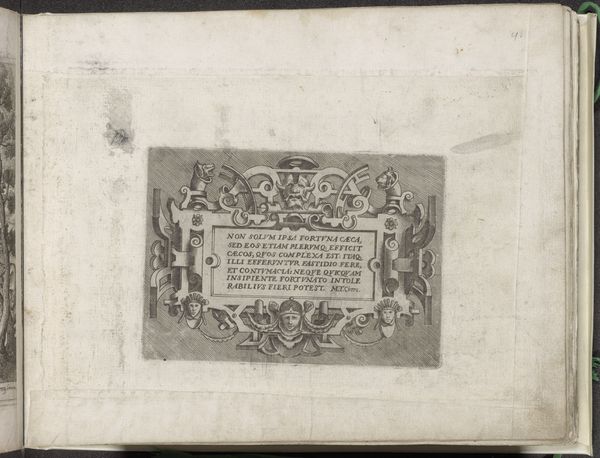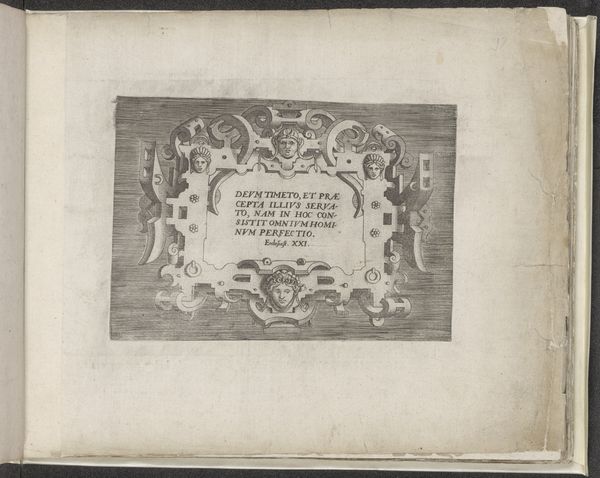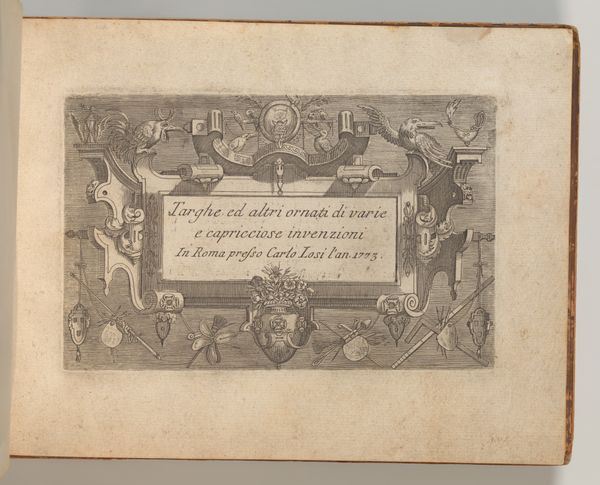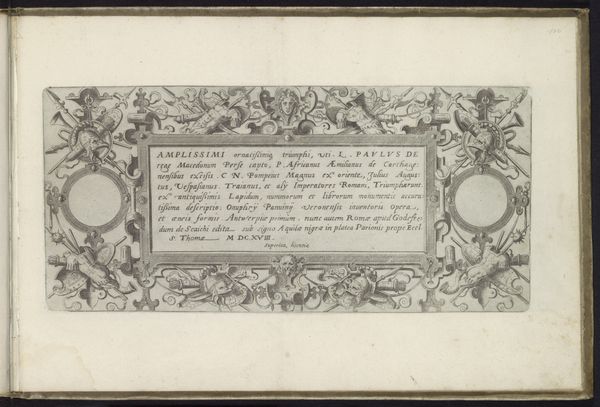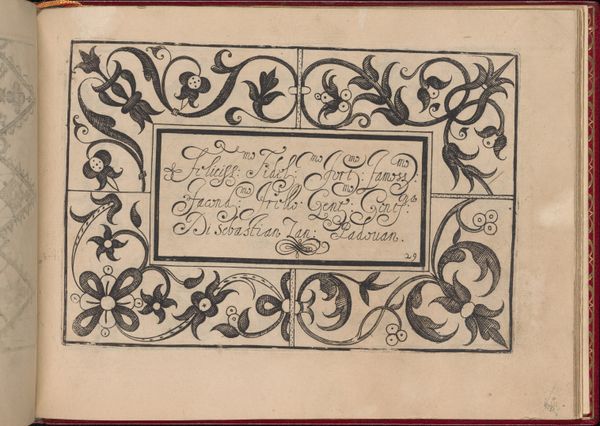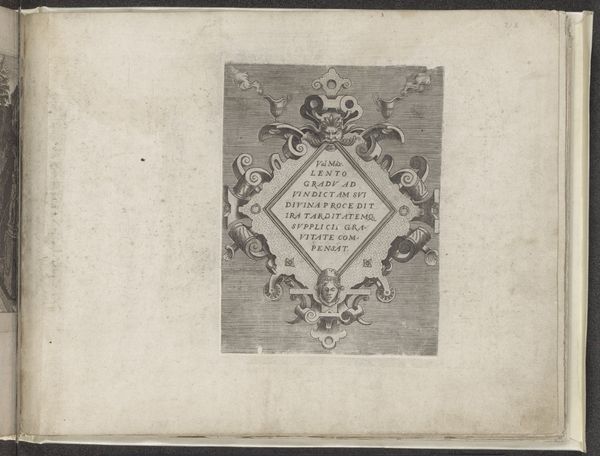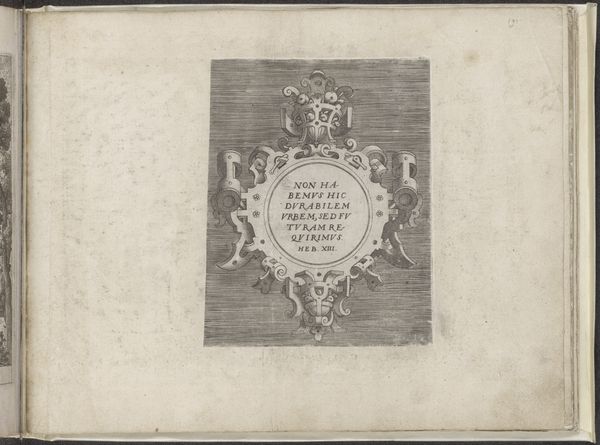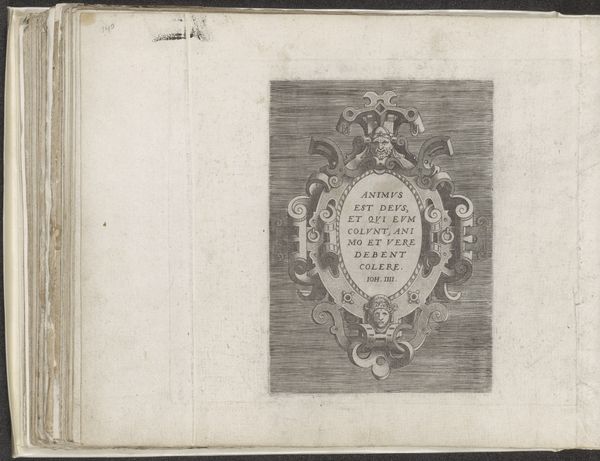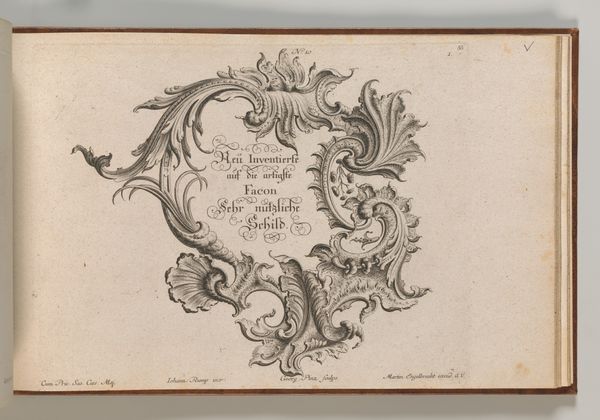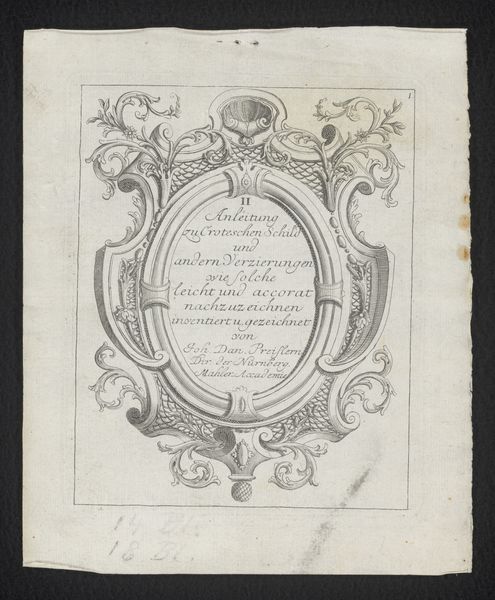
Titelprent voor: Altera pars horti floridi in qua praeter flores, varia etiam reperiuntur arborum fructiferarum, fructicum, plantarrum quoque et herbarum medicinalium genera 1617
0:00
0:00
graphic-art, print, typography, engraving
#
graphic-art
#
baroque
# print
#
typography
#
engraving
Dimensions: height 125 mm, width 204 mm
Copyright: Rijks Museum: Open Domain
Curator: Looking at this image, I am struck by its immediate evocation of the pastoral and spiritual, all at once. Editor: The first thing that catches my eye is the texture—the obvious process of engraving gives it this rigid quality, this labor that reminds me of craft. I feel its connection to the wider world of printing techniques during that era. Curator: You are looking at the title page for *Altera pars horti floridi*, printed in 1617. Notice the flowers placed in each elaborate vase; those arrangements become emblems of cultivation, order, and, in the context of a book about flora, perhaps a suggestion of medicinal power and control over nature. Editor: "Power" is interesting because the labor needed to create all the ornamental details within this print reflects back on society at the time. Who has access to botanical knowledge, or luxury engravings like these? Who is to consume the garden being depicted here, both literally and artistically? Curator: Right! The inclusion of biblical text around those flowers creates an interesting synthesis. By pairing botanical illustration with religious scripture, Matthias von Kinkelbach, the artist behind the engraving, appears to make claims about God's creation reflecting onto man’s intellectual labor and dominion. Editor: Yes, the text becomes another material, doesn't it? More ink. This pushes me to think about what kind of "book production system" allowed for merging text and botanical images this way, both for aesthetics and for the wider exchange of knowledge across Europe during that time. How many copies were made? Curator: And to think of the lifespan of the images and its allegorical weight across decades! A Baroque visualization blending the religious and natural to evoke divine grace but now telling us something new about those long gone consumers. Editor: It's fascinating how much meaning is loaded in one single page; how it simultaneously opens up our understanding of artistic techniques and wider political ideas linked to craft and knowledge systems back then.
Comments
No comments
Be the first to comment and join the conversation on the ultimate creative platform.
